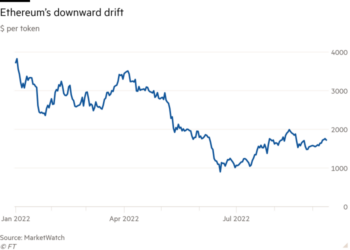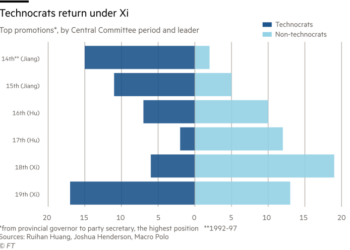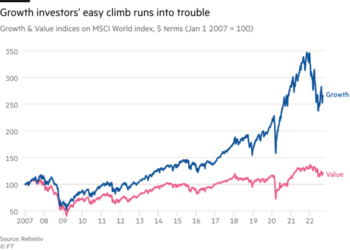This week, the New York Times paid more than half a billion dollars for a sports news start-up founded only five years ago. The paper also lost one of its star columnists, Ben Smith, who is trying his luck with his own news moonshot.
Both moves are emblematic of the times in digital media. In a sector that had been littered with failed dreams and pessimism, a fresh wave of hopefuls are fuelling what some executives say is the most significant period of change in years.
“We have entered a frenzied phase of media innovation, both from inside established businesses and start-ups,” said Douglas McCabe, analyst for Enders.
This generation of start-ups is distinct from page view-obsessed predecessors of the mid-2010s, which gave readers stories for free in order to reach large audiences. Instead, these companies believe that journalism should be paid for and that, thanks to social media, individual writers can form relationships with their readers, in the same way social media influencers do with followers.
These groups were validated this week as The Athletic, a sports news site founded five years ago by two former co-workers at the fitness group Strava, sold for $550m. It was the second-largest acquisition in the Times’ history.
“I joined [the Times] on the bet that if you make something really great that people can’t get elsewhere, they’re gonna pay for it. I think lots of places are proving that out,” Meredith Kopit Levien, chief executive of the New York Times, told the Financial Times. “There’s a real market of people who will pay for subscriptions. Even in digital when many of the alternatives are free. It’s a very different thing than just . . . chasing scale.”
Jon Kelly, a former Vanity Fair editor who last year co-founded Puck, a subscription-based publication covering business and politics, believes this is the “biggest market upheaval in 20 years”. Puck raised $7m from investors including TPG to hire a handful of influential journalists, who each own a stake in the company.
Executives, writers and observers have been debating the future of journalism for the better part of two decades, as the internet eroded existing business models. Venture capitalists drove a boom of innovation from 2014 to the end of 2016, during which Silicon Valley investors poured hundreds of millions of dollars into online media start-ups at frothy valuations.
BuzzFeed, which found viral success with stunt videos such as exploding a watermelon with rubber bands, was valued at as much as $1.7bn in 2016. But the bubble burst as Facebook and Google took over the online advertising market, leading to writedowns and lay-offs at media groups that depended on digital ads, such as BuzzFeed and Vice.
BuzzFeed last year aimed to go public via a special purpose acquisition company deal at a $1.5bn valuation. However, after listing on the Nasdaq in December, its share price sank, valuing the group at $670m on Friday, a multiple of only 1.2 times its annual revenue.
In comparison, Axios, a start-up founded by former Politico journalists, was recently valued at $430m in a fundraising, about five times its annual revenue. German publisher Axel Springer last year acquired Politico for $1bn, also roughly five times its annual revenue. The New York Times trades at a multiple of 3.6 times annual revenue.
Vice Media, like BuzzFeed, has experienced a fall back to earth. At its peak in 2017, Vice was valued at a staggering $5.7bn by investor TPG. Only two years later, another investor — Disney — wrote off its entire stake in the company. That same year, Vice bought women’s website Refinery29 in an all-stock deal; the companies assigned a value for their combined group at about four times annual revenue.
Jessica Lessin, who in 2013 founded The Information, a technology news publication aimed at Silicon Valley executives, said the industry had reached a “healthier place”.
“There was this period when investors ran as fast as possible away from news [companies]. Then we had the phase where Andreessen Horowitz was investing in BuzzFeed . . . tech was chomping at the bit to invest in content in that wave,” she added. “Now, it’s targeted, and it’s far from the extremes where [investors] were either running for the fences or just writing huge cheques.”

In addition to Puck, other journalists have recently sought to create their own publications.
Richard Rushfield, who previously worked at the Los Angeles Times and Gawker, last month spun his newsletter about Hollywood into a new business; Lessin has invested.
Some reporters from Politico — itself founded by former Washington Post journalists — last year left their jobs to form Punchbowl News, charging readers $300 a year for information on “the people in Washington who make decisions”.
Influential journalists including Bari Weiss and Andrew Sullivan have left their jobs at major media outlets for Substack, a platform where they can self-publish and charge readers a fee for access to their newsletters. The top 10 writers on Substack combined make more than $20m in revenue a year, far in excess of traditional newsroom salaries.
But overall there is far less money flowing into digital media compared with the 2010s. Venture capital last year invested $115m in digital media, a tenth of the $1.1bn it funded in 2015, according to PitchBook data.
BuzzFeed’s lacklustre stock market debut underlined the pessimism about certain types of business model; almost all investors from its Spac fund fled before the listing last year.
Yet Justin Smith, former chief executive of Bloomberg Media, who is starting a company with Ben Smith, told the FT he was “flooded with interest” from investors this week. He declined to name any of them, and is funding the operation himself, but waxed lyrical about the opportunity.
“Netflix was the real pioneer that identified this audience in the content space . . . this global strategy. The same type of people, this audience, all share a common interest in great entertainment. That’s the best way to explain the audience we see. It’s almost like launching a planetary news brand. Which has really not been done,” he said.
It is too early to say how much space there is for all these subscriptions in consumers’ budgets. An online subscription to The Information costs $39 a month, more than it would cost for subscriptions to streaming services Netflix, Disney Plus and HBO Max combined, even though it is aimed at those with larger wallets. News publishing remains a shrinking industry, and even a success story such as The Athletic is losing money.
“It is still incredibly difficult to build a news organisation,” warned Lessin. “It’s not a business for the faint of heart.”











